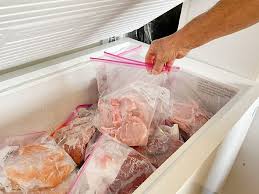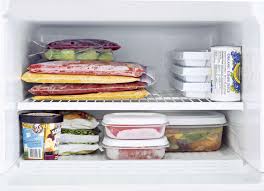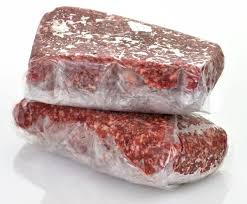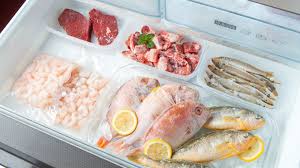Freezing is a popular method for preserving food, allowing people to store various items for extended periods without losing quality. This technique slows down the enzymatic processes and microbial growth that can lead to food spoilage. Understanding how freezing works and following best practices can help maintain the freshness and safety of frozen foods.
The Science Behind Freezing
Freezing works by lowering the temperature of food to below its freezing point, typically 0°F (-18°C). This process causes water molecules in the food to solidify into ice. Here are some key scientific principles behind freezing:
1. Temperature Drop: Rapidly lowering the temperature of food helps form smaller ice crystals, which minimizes damage to the food’s cellular structure.
2. Water Activity Reduction: As food freezes, the water available for microbial activity decreases, limiting the growth of bacteria and molds.
3. Enzyme Activity: Freezing slows down the enzymatic reactions that cause spoilage. While freezing doesn’t kill all microorganisms, it significantly reduces their activity, prolonging the food’s shelf life.
Benefits of Freezing for Food Preservation

Freezing offers several advantages for preserving food:
1. Extended Shelf Life: Frozen foods can last for months or even years, allowing for long-term storage.
2. Nutrient Retention: When done correctly, freezing preserves the nutritional value of food, keeping vitamins and minerals intact.
3. Convenience: Frozen foods are easy to prepare and can be portioned for quick meals. They also help reduce food waste by allowing you to store leftovers.
4. Seasonal Availability: Freezing allows you to enjoy seasonal fruits and vegetables year-round, giving you access to a wider variety of foods.
How Freezing Inhibits Microbial Growth
Freezing inhibits microbial growth through several mechanisms:
1. Reduced Temperature: Lower temperatures slow down the metabolic processes of bacteria, yeasts, and molds, effectively putting them into a dormant state.
2. Ice Crystal Formation: As water turns to ice, it creates an inhospitable environment for microbes. The formation of large ice crystals can rupture cell membranes, rendering bacteria inactive.
3. Oxygen Limitation: Freezing can limit oxygen availability, further reducing microbial activity and spoilage. Vacuum-sealing foods before freezing can enhance this effect.
Read Also: Reasons why Your Fishes Don’t Grow
Best Practices for Freezing Food

To maximize the benefits of freezing and ensure food safety, follow these best practices:
1. Prepare Food Properly: Clean, peel, and chop fruits and vegetables before freezing. Blanching (briefly boiling and then cooling) vegetables can help preserve color, flavor, and nutrients.
2. Use Appropriate Containers: Choose airtight containers or heavy-duty freezer bags designed for freezing. Remove as much air as possible to prevent freezer burn.
3. Label and Date Packages: Always label containers with the contents and the date they were frozen. This helps you keep track of how long items have been in the freezer.
4. Freeze in Portions: Divide food into portions that you will use at one time. This prevents thawing and refreezing, which can negatively impact texture and flavor.
5. Maintain Consistent Freezer Temperature: Keep your freezer at 0°F (-18°C) or lower. Regularly check the temperature to ensure optimal food preservation.
6. Thaw Safely: When ready to use frozen food, thaw it in the refrigerator, cold water, or the microwave. Avoid thawing at room temperature, as it can promote bacterial growth.
Types of Freezing Techniques
Freezing food can be done using various techniques, each with its benefits and best-use scenarios. Here are some common freezing methods:
1. Flash Freezing: This technique involves rapidly freezing food at very low temperatures. It prevents the formation of large ice crystals, preserving the texture and quality of the food. Flash freezing is commonly used in commercial operations and is effective for fruits, vegetables, and seafood.
2. Freezer Bag Method: This simple technique involves placing food in heavy-duty freezer bags, removing as much air as possible, and sealing the bags. It’s great for items like meats, fruits, and leftovers. The bags take up less space and help prevent freezer burn.
3. Ice Cube Tray Method: This method is ideal for liquids like soups, sauces, and purees. Pour the liquid into ice cube trays, freeze until solid, and then transfer the cubes to a freezer bag or container. This makes it easy to portion and thaw only what you need.
4. Vacuum Sealing: Using a vacuum sealer, this technique removes air from bags before sealing them tightly. This method is excellent for preserving meats, vegetables, and ready-to-cook meals, as it prevents freezer burn and enhances flavor retention.
5. Commercial Freezing: This is a method used by manufacturers to freeze large quantities of food quickly. It often employs advanced technology to ensure rapid freezing and high-quality preservation. This technique is effective for bulk items like frozen dinners, pizzas, and pre-packaged meals.
Read Also: The Best Stage to Start Raising your Catfishes (Fingerlings or Juveniles)
Common Mistakes to Avoid When Freezing

To ensure that your frozen foods remain safe and tasty, avoid these common mistakes:
1. Not Blanching Vegetables: Failing to blanch vegetables before freezing can result in loss of flavor, color, and texture. Blanching helps inactivating enzymes that can lead to spoilage.
2. Overpacking the Freezer: Overcrowding the freezer can restrict air circulation, causing uneven freezing. Leave space between items for air to flow.
3. Using Inappropriate Containers: Using regular plastic bags or containers that aren’t designed for freezing can lead to freezer burn and contamination. Always use airtight, freezer-safe containers.
4. Not Labeling Packages: Forgetting to label packages with the date and contents can lead to confusion and wasted food. Always label items to keep track of how long they’ve been stored.
5. Refreezing Thawed Food: Refreezing food that has been thawed (unless cooked) can affect texture and safety. If food is thawed in the refrigerator, it can be safely refrozen, but it’s best to cook it first.
Thawing Methods and Food Safety
Proper thawing is essential to maintain food safety and quality. Here are the best methods to thaw frozen foods safely:
1. Refrigerator Thawing: This is the safest method for thawing frozen food. Place the food in the refrigerator and allow it to thaw gradually. This method keeps the food at a safe temperature, preventing bacterial growth.
2. Cold Water Thawing: For faster thawing, submerge the sealed food in cold water, changing the water every 30 minutes. This method is suitable for smaller items but should not be used for large pieces of meat.
3. Microwave Thawing: Use the microwave’s defrost setting to thaw food quickly. However, this method can partially cook the food, so it should be cooked immediately after thawing.
4. Cooking from Frozen: Some foods can be cooked directly from frozen, such as certain vegetables or pre-prepared meals. Just be sure to increase the cooking time accordingly.
5. Avoid Room Temperature Thawing: Never thaw food at room temperature, as this can allow harmful bacteria to grow. Always use one of the safe thawing methods mentioned above.
By understanding the various freezing techniques, avoiding common mistakes, and following safe thawing methods, you can maximize the quality and safety of your frozen foods. This knowledge allows you to enjoy the convenience of frozen foods while ensuring they remain nutritious and delicious.
Do you have any questions, suggestions, or contributions? If so, please feel free to use the comment box below to share your thoughts. We also encourage you to kindly share this information with others who might benefit from it. Since we can’t reach everyone at once, we truly appreciate your help in spreading the word. Thank you so much for your support and for sharing!
Read Also: All You Need to Know About Periwinkles
Frequently Asked Questions
We will update this section soon.

